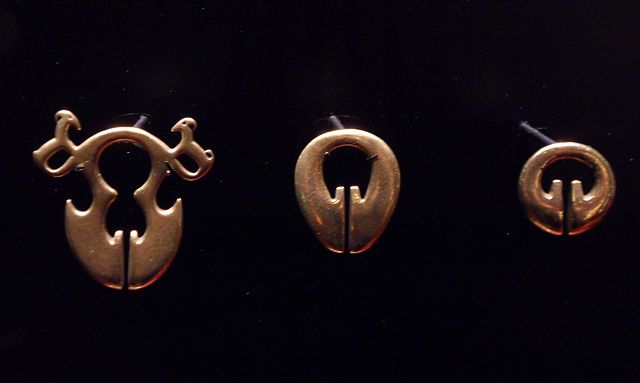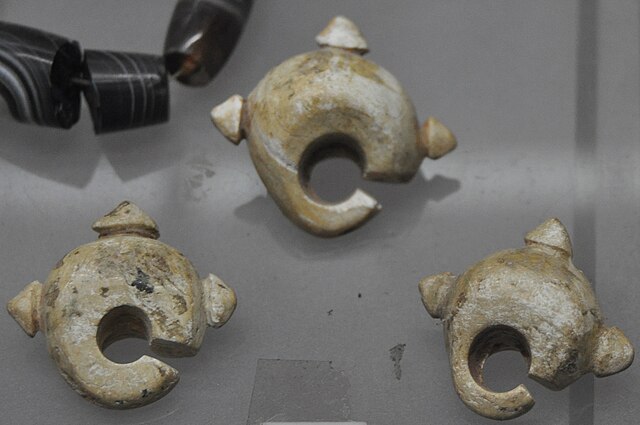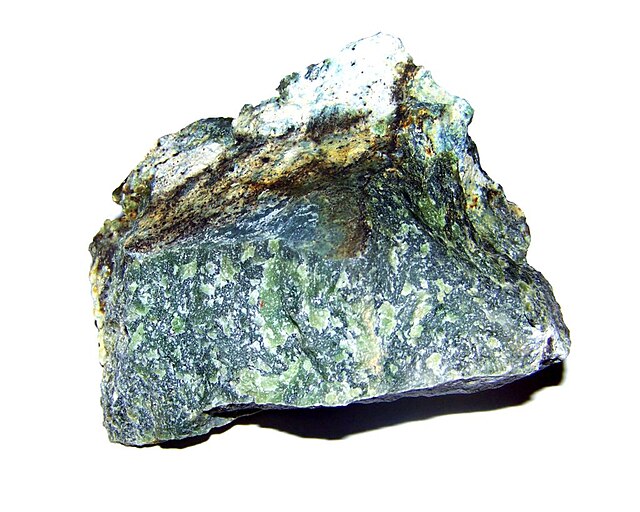Philippine jade culture, or jade artifacts, made from white and green nephrite and dating as far back as 2000–1500 BC, have been discovered at a number of archaeological excavations in the Philippines since the 1930s. The artifacts have been both tools like chisels and ornaments such as lingling-o earrings, bracelets, and beads.
Philippine jade culture
Lingling-o designs from the Philippines
Lingling-o designs from Vietnam
Batanes, a province in northern Philippines, was a major processing site for the Maritime Jade Road; many lingling-o artifacts originate from the ancient workshops of Batanes
Nephrite is a variety of the calcium, magnesium, and iron-rich amphibole minerals tremolite or actinolite (aggregates of which also make up one form of asbestos). The chemical formula for nephrite is Ca2(Mg, Fe)5Si8O22(OH)2. It is one of two different mineral species called jade. The other mineral species known as jade is jadeite, which is a variety of pyroxene. While nephrite jade possesses mainly grays and greens (and occasionally yellows, browns, black or whites), jadeite jade, which is rarer, can also contain blacks, reds, pinks and violets. Nephrite jade is an ornamental stone used in carvings, beads, or cabochon cut gemstones. Nephrite is also the official state mineral of Wyoming.
Nephrite from Jordanów Śląski (Poland)
"Mutton fat" jade for sale at Hotan Jade Market
Large "mutton fat" nephrite jade displayed in Hotan Cultural Museum lobby.
Nephrite from Wyoming








